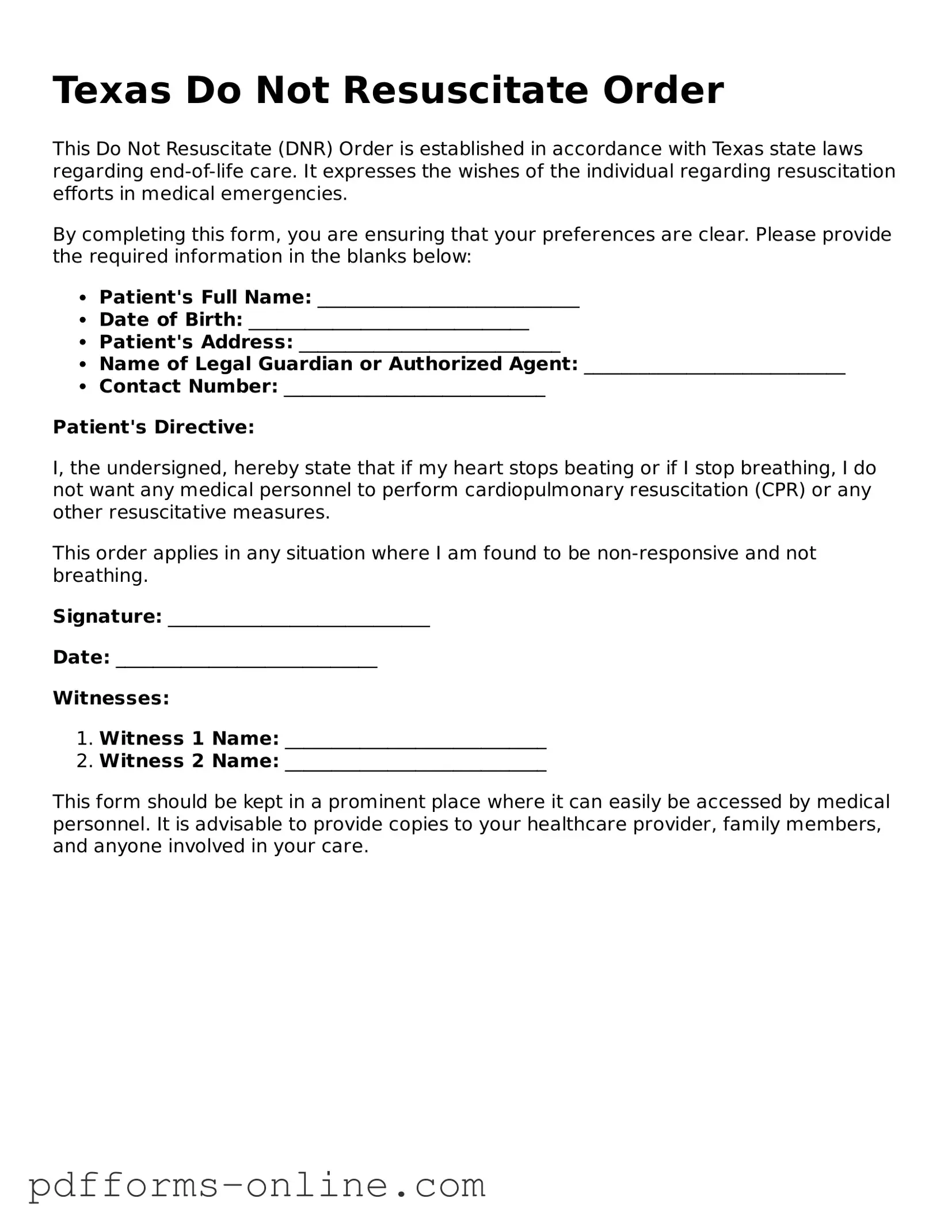Texas Do Not Resuscitate Order
This Do Not Resuscitate (DNR) Order is established in accordance with Texas state laws regarding end-of-life care. It expresses the wishes of the individual regarding resuscitation efforts in medical emergencies.
By completing this form, you are ensuring that your preferences are clear. Please provide the required information in the blanks below:
- Patient's Full Name: ____________________________
- Date of Birth: ______________________________
- Patient's Address: ____________________________
- Name of Legal Guardian or Authorized Agent: ____________________________
- Contact Number: ____________________________
Patient's Directive:
I, the undersigned, hereby state that if my heart stops beating or if I stop breathing, I do not want any medical personnel to perform cardiopulmonary resuscitation (CPR) or any other resuscitative measures.
This order applies in any situation where I am found to be non-responsive and not breathing.
Signature: ____________________________
Date: ____________________________
Witnesses:
- Witness 1 Name: ____________________________
- Witness 2 Name: ____________________________
This form should be kept in a prominent place where it can easily be accessed by medical personnel. It is advisable to provide copies to your healthcare provider, family members, and anyone involved in your care.
